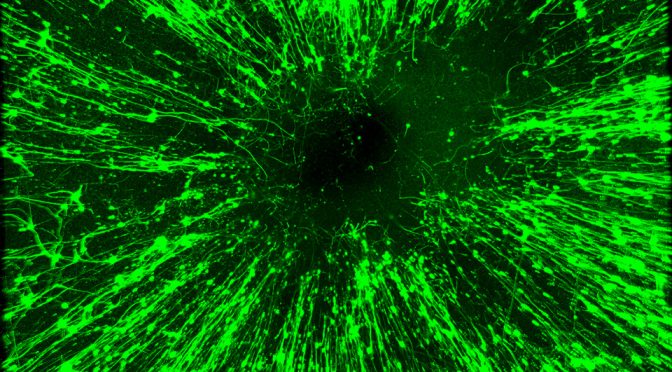What is the focus of your research?
We are exploring how best to transplant new cells into the retina to replace damaged ganglion cells, which normally transport signals from the eye to the brain. Retinal cells are like spinal cord cells in that they cannot repair themselves. Once they are damaged, they are gone. We are researching how tissue engineering techniques can be used to encourage implanted cells to grow into the optic nerve, ultimately restoring vision to patients suffering from glaucoma or optic nerve injuries.
How does your engineering background influence your research?
In the lab, we design and build three-dimensional scaffolds from biomaterials. When cells are just injected into the eye, they grow randomly. But we have shown that by using a scaffold structured sort of like a bicycle wheel with spokes, we can make the ganglion cells grow toward the center of the wheel. The scaffolds supply directional cues to the ganglion cells that replace the missing synapses, or nerve signals, and guide those signals from the eye to the brain.
How important is your NIH funding?
In April of 2018 we were very fortunate to receive a major grant award from the National Institutes of Health that will provide UMKC with $1.94 million over the next five years. It will allow us to hire a post-doctorate researcher, a technician and perhaps a graduate student as well. This will help speed up our research, which like all research, can be slow and incremental.
What is your favorite part of the research process?
We image the mature cells using fluorescent colors, which allows us to trace their growth. I love seeing these beautiful images, which also represent hope for people with severe vision impairments.

